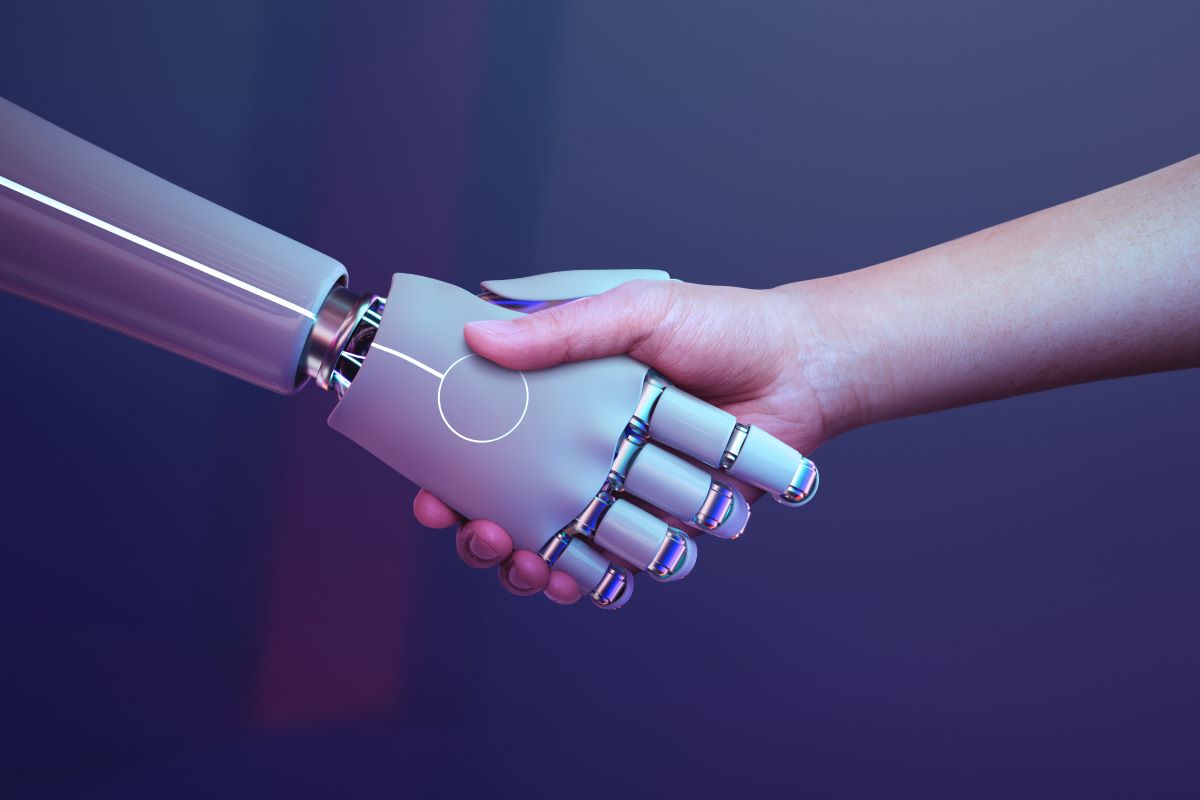
I can’t help but feel that Artificial Intelligence (AI) is the 21st Century Race to the Moon. In just the first few weeks of 2025, we’ve seen groundbreaking developments. From the UK government's AI action plan to DeepSeek’s revolutionary energy-efficient AI model. It feels like AI is embedded in every conversation, either as a topic of discussion or a tool assisting those discussions.
The speed and pace at which AI is evolving is both exciting and alarming. There is no doubt AI is revolutionising how businesses operate. But the real question isn't how fast AI is evolving—it's how we, as humans, evolve alongside it. AI is not here to replace us; it’s here to enhance what we do best. The real power lies in the synergy between human intelligence and machine efficiency. AI excels at processing data, automating repetitive tasks, and identifying patterns, while humans bring creativity, emotional intelligence, and critical thinking. By integrating AI effectively, businesses can enhance productivity, improve decision-making, and create innovative solutions while maintaining authenticity and ethical responsibility.
The winning formula isn’t AI or humans alone—it’s Human + AI working in harmony.
Reality check
Whether you’re an AI advocate, sceptic, or undecided, AI:
-
Is transforming work and daily life by reshaping economic value, creativity, and the future of work.
-
Is shifting job markets by replacing some roles while creating new opportunities and skill demands.
-
Comes with risks—from reputation to security, for good and for bad. Like any new technology, responsible and ethical adoption is key.
It’s not just about what AI can do but about how we choose to implement it. A thoughtful, human-led approach ensures AI supports rather than overrides business values and goals.
What can AI do for you?
AI’s potential is endless, and almost any aspect of your business can benefit from it. Here are some practical ways AI can be leveraged today:
-
Automate repetitive tasks – From data entry to scheduling, AI can handle time-consuming tasks, allowing employees to focus on strategy and creative problem-solving.
-
Enhance customer support – AI-powered chatbots and virtual assistants provide 24/7 customer service, offering instant support for frequently asked questions.
-
Improve decision-making – AI analyses large datasets and trends to offer actionable business insights that drive smarter strategies.
-
Personalise marketing efforts – AI identifies patterns in customer behaviour, enabling businesses to deliver hyper-personalised experiences.
-
Boost cybersecurity – AI monitors and detects potential threats in real time, reducing cybersecurity risks before they escalate.
-
Streamline hiring processes – AI screens CVs, matches candidates with job requirements, and reduces hiring bias through data-driven analysis.
-
Optimise supply chain management – AI predicts demand trends and optimises inventory levels to prevent over- or under-stocking.
-
Enhance financial management – AI-powered tools help with fraud detection, risk assessment, and financial planning.
-
Improve product development – AI assists in analysing market trends and customer feedback, helping refine and innovate product offerings.
-
Increase workplace productivity – AI-powered workflow automation enhances team collaboration, streamlining operations for maximum efficiency.
Rather than adopting AI just because it’s trending, businesses should consider which specific AI solutions align with their goals and challenges.
What can you do for your organisation?
Start with risk
AI’s potential is vast, but businesses must approach its adoption strategically. The first step? Risk assessment.
-
Security risks – AI systems can be vulnerable to cyberattacks or data breaches. Implementing strong security measures and ensuring AI systems adhere to data protection regulations is essential. Start with a Data Protection Impact Assessment (DPIA) to understand what information you’re sharing and why.
-
Reputation management – AI-generated content and decisions must align with brand values. Google and others are already demoting AI-generated content, and audiences can tell when content lacks authenticity. Be mindful of how you use AI to ensure it reinforces rather than weakens your brand’s identity.
-
Legal & regulatory compliance – Many industries, such as healthcare and finance, have regulations that have yet to fully adapt to AI. AI-driven tools may be powerful, but unclear legal frameworks can create liability risks. Staying ahead of regulatory changes is crucial.
Educate yourself and your team
Adopting AI effectively starts with education, understanding both the opportunities and the risks as AI tools evolve.
-
Understand AI basics – Platforms like Coursera, edX, and Google’s AI Hub offer beginner-friendly courses.
-
Assess business needs – Identify where AI can add value to your specific operations rather than following generic trends.
-
Train employees – Invest in AI workshops to ensure your team can work with AI rather than against it.
-
Establish ethical guidelines – Create clear internal policies on AI usage, focusing on transparency and accountability.
-
Stay up to date – AI is evolving rapidly. Follow industry leaders, attend webinars, and join AI-focused forums.
Evolve through an agile mindset
AI adoption should be an iterative, agile process - testing, learning, and refining as needed. The UK Government recently published its AI playbook, an excellent resource for businesses starting their AI journey. Consider:
-
Set up a steering group – Establish a cross-functional team to oversee AI adoption and ensure it aligns with your company’s mission.
-
Start small & experiment – Test AI tools in specific areas before scaling up.
-
Adopt agile methodologies – Use a test-and-learn approach to refine AI strategies based on real-world feedback.
-
Encourage collaboration – AI adoption shouldn’t be siloed within IT teams—it should be an organisation-wide effort.
Stay unique – Don’t become a sheep
AI is exciting, but businesses shouldn’t get carried away. AI should enhance your brand, not dilute it. Striking a balance between efficiency and originality is key.
-
Maintain your brand voice – AI can assist in content creation, but your brand’s unique tone and perspective should remain intact.
-
Use AI as a support tool, not a replacement – AI should amplify human creativity and decision-making, not take over entirely.
-
Customise AI for your business – Avoid one-size-fits-all AI solutions. Tailor AI to your specific challenges and opportunities.
-
Monitor & adjust AI strategies – Regularly assess AI’s impact to ensure it remains aligned with your business’s values and mission.
The future is Human + AI
The winning formula for businesses looking to thrive in the digital age is humans working smarter with AI. AI can drive efficiency, automate mundane tasks, and provide powerful insights—but its true power is unlocked when combined with human creativity, emotional intelligence, and ethical judgment.
By understanding AI’s capabilities, assessing risks, educating teams, implementing agile adoption strategies, and staying true to your unique business values, companies can harness AI’s potential while maintaining their authenticity.
Let’s talk AI
At Digital Wonderlab, we help businesses navigate the AI landscape with human-first digital solutions. Whether you’re exploring AI strategies or looking to develop AI-powered tools, we’re here to help. Let’s explore how AI can drive real impact for your business - get in touch to start the conversation.
